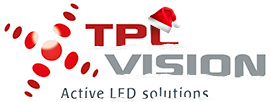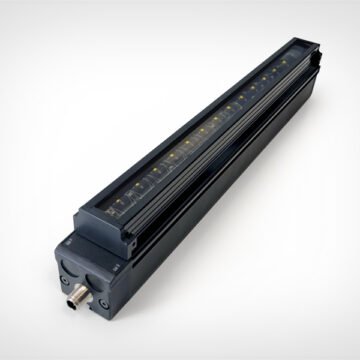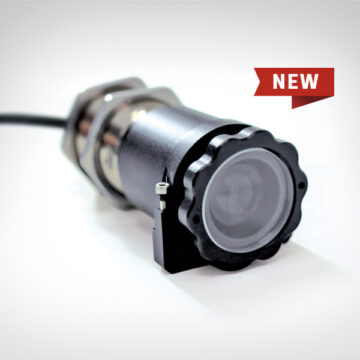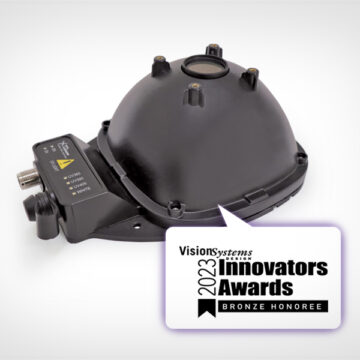Ultraviolet (UV) light is a form of electromagnetic radiation that has shorter wavelengths than visible light, making it invisible to the human eye. Ultraviolet light gets its name from the ‘violet’ colour it creates in the visible portion of the spectrum. Due to its ability to reveal details that normal light cannot, UV lighting is used across a wide range of industries, from quality control and security to scientific research.
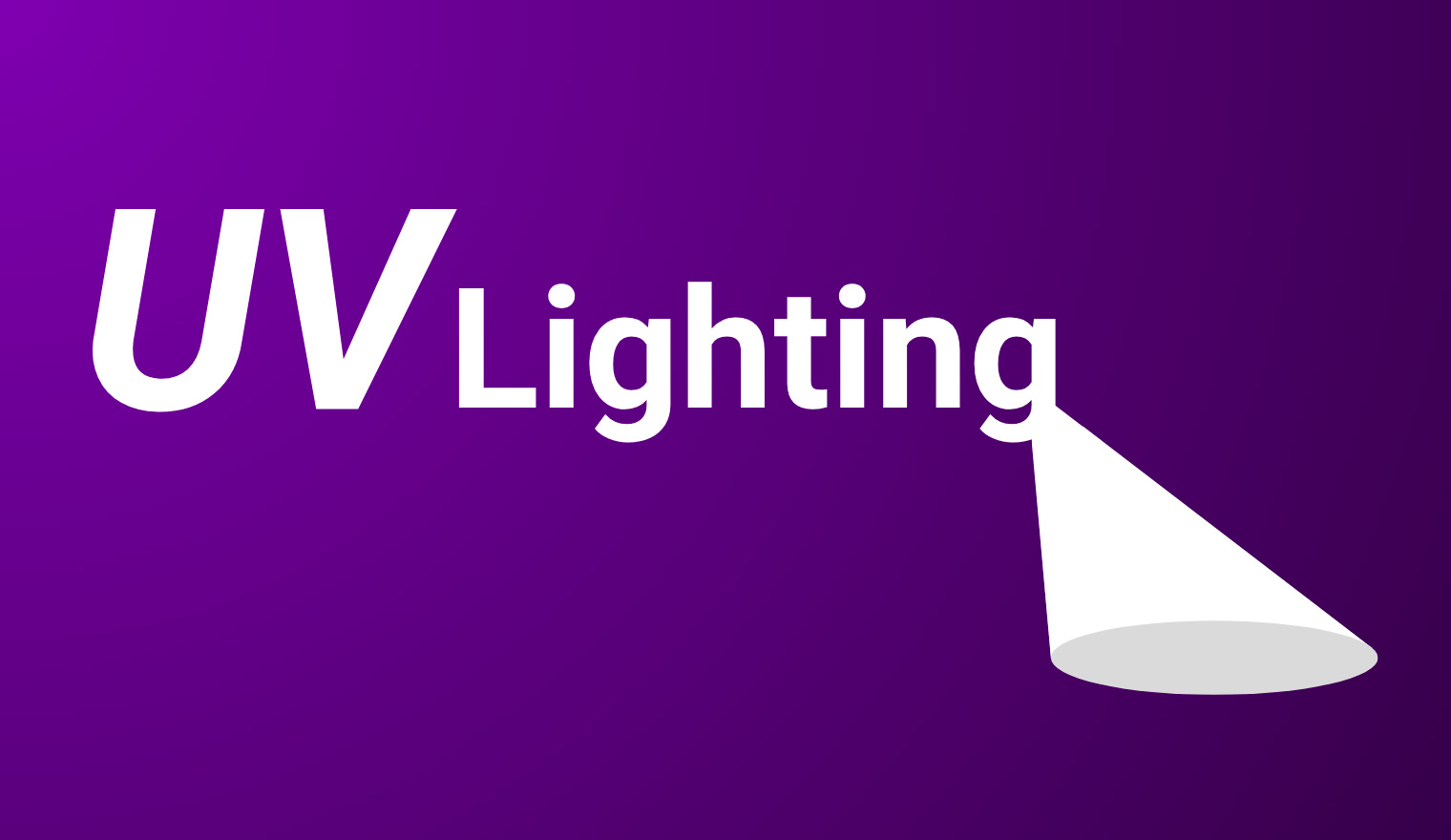
What is UV Lighting in Machine Vision?
When it comes to machine vision, UV lighting is used to reveal features that are invisible under standard lighting. It is an ideal method for surface inspections as it can detect small features, dust and scratches. Beyond inspection, UV lighting is also used for disinfection, hygiene monitoring, and the identification of fluorescent security inks and counterfeit-resistant packaging features. Additional applications include the scanning and verification of barcodes, QR codes, images, and graphics.
UV LIGHTING IS USED FOR THE INSPECTION OF FIBRE OPTIC CABLES, AS WELL AS IN VARIOUS SECTORS:
- Medical – Healthcare, diagnostics, devices, etc.
- Industrial – Manufacturing, heavy machinery, production lines.
- Commercial – Consumer-facing goods, and packaging, such as food, beverages, cosmetics, perfume packaging.
UV LIGHT IS SUBDIVIDED INTO:
- UV-A (315 – 400 nm) – Most commonly used in machine vision. Used for fluorescence inspection, surface inspection, detecting invisible markings, adhesives, and inks.
- UV-B (280 – 315 nm) – Has deeper penetration and higher energy. This is less common in machine vision due to safety concerns, but useful for specific inspection tasks for specialised material analysis or defect detection.
- UV-C (100 – 280 nm) – A rarely used option due to hazards and low sensor compatibility. For machine vision, UV-C is mainly used in specialised applications like germ detection or biofilm analysis.
Challenges in Machine Vision Inspections
Before the introduction of UV illumination in the early 2000s, machine vision systems faced significant limitations in both quality control and application range. Traditional inspection methods, such as manual visual checks, were slow, inconsistent, and prone to human error. Even with visible light imaging, many critical defects and features remained undetectable. The introduction of UV lighting provided a powerful solution improving inspection accuracy and efficiency to enable the detection of previously invisible features.
CHALLENGES:
- Low contrast on challenging surfaces – Transparent, reflective, and dark materials often produced poor contrast under standard lighting conditions. As a result, many features remained undetected, leading to inconsistent and unreliable inspection results.
- Inability to detect invisible features – Before UV lighting, machine vision systems were unable to reveal fluorescent markings, invisible inks, or UV-reactive adhesives. This limited inspection capabilities to only visible defects, making advanced applications like fluorescence imaging impossible.
- Undetected coating defects – When using standard lighting alone, machine vision couldn’t detect clear or thin coatings, contamination films, or adhesive coverage. These subtle features lacked the optical contrast needed for detection, reducing the effectiveness of quality control.
How UV Lights Solve these Challenges
UV light has been harnessed by the machine vision world to open up a brand new sector in inspection applications. Due to the advances in technology, UV light offers more precision and higher quality control.

SOLUTIONS:
UV lighting improves the visibility of surface details by enhancing light scattering on transparent, reflective, and dark materials. This reveals fine defects and textures that would be lost under standard lighting, to provide more reliable inspection results.
By exciting fluorescent materials, UV lighting makes invisible inks, adhesives, and security markings visible to machine vision systems. This enables advanced applications like authentication, traceability, and fluorescence-based inspections.
UV illumination highlights clear coatings, contamination films, and adhesive layers by causing them to fluoresce or reflect differently, allowing machine vision systems to detect uneven coverage or defects that standard lighting can’t reveal.
Benefits of UV LED Systems
By consistently detecting defects and variations with high accuracy, UV lighting reduces the need for manual inspections and minimises human error, resulting in more reliable automated inspections. It’s versatility across a wide range of materials and surfaces makes it ideal for use in industries such as electronics, pharmaceuticals, packaging (perfume packaging), and medical devices. Additionally, UV LED systems have long lifespans, low maintenance needs, and reduced power consumption, making them a highly cost-effective and scalable alternative to manual inspection or complex imaging setups.

Application Examples:
- Pharmaceutical Packaging Inspection
UV lighting is commonly used to identify fluorescent security inks on pharmaceutical labels and packaging. These inks are invisible under standard lighting but become clearly visible under UV, allowing machine vision systems to detect missing or counterfeit labels, confirm proper product marking, and ensure regulatory compliance.
- Printed Circuit Board (PCB) Defect Detection
In electronics manufacturing, fine scratches, solder joint defects, and contamination on PCBs are visible under UV light. The short wavelength of UV light increases surface scattering, which highlights small imperfections that would be difficult to see under regular light. This improves inspection accuracy and supports high-quality assembly.

TPL Vision UV LED Solutions for Machine Vision
At TPL Vision, we have a range of UV lights to offer, each designed to support machine vision inspections by enhancing fluorescence and contrast:
- Essential EBAR UV 405, 385 and 365: These highly powerful bar lights provide uniform illumination over large inspection areas. These solutions are ideal for packaging and counterfeit notes detection.
- Z Spot Light: This robust and compact spotlight is available in UV wavelengths (405 nm, 385 nm, and 365 nm). It is perfect for inspecting small parts, highlighting micro-defects and fluorescent markings with precision.
- Essential ELINE Collimated Line Scan Light: Our collimated UV line light is tailored for line scan systems, reducing reflections and enhancing contrast on reflective or curved surfaces in fast-paced environments.
- Fluorescence Imaging Dome Light: Our flexible multi-wavelength FIS UV dome light is suitable for authentication, traceability and fluorescence inspection applications.
UV LIGHTING has unlocked new possibilities for the machine vision world by revealing what standard lighting cannot. Through enhancing contrast, exciting fluorescence, and improving inspection accuracy, UV illumination enables faster, more reliable quality control across a wide range of applications.
With TPL Vision’s advanced range of UV lights, you can select the perfect solution for your specific application. Designed for performance, durability, and easy integration, our UV products help you unlock higher inspection accuracy, reduce downtime, and achieve consistent, repeatable results in your production environment.
